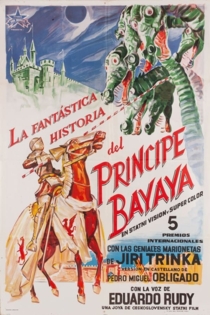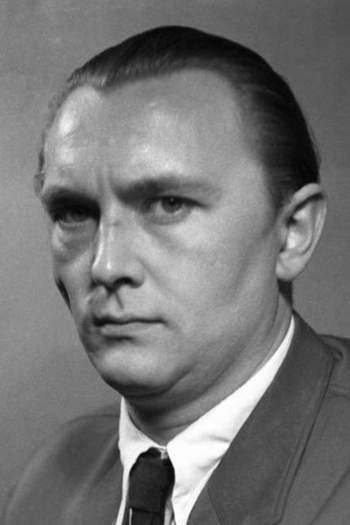
Jiří Trnka
1912 - 1969Ruka
Jiří Trnka
Ladislav Fialka
A happy little potter is approached by a huge hand which wants him to sculpt its statue. The potter refuses, wanting nothing more than to be left alone with his only friend, a potted plant. As the hand's request gives way to bribery, demands, and threats, the potter becomes more desperate to escape its clutch, leading to tragedy.
The Hand
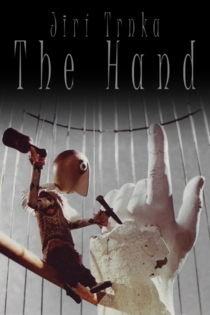
Osudy dobrého vojáka Švejka
Jiří Trnka
Jan Werich
Adapting Jaroslav Hasek's raucous satirical novel, and also bringing Josef Lada's equally famous illustrations to garrulous puppet life, posed Trnka one of his biggest creative challenges. Trnka himself felt that the final episode was the most artistically successful, but there's much to enjoy in all three, not least the way that the lackadaisical layabout Svejk's own self-serving anecdotes are realized through cut-out animation.
The Good Soldier Schweik

Kybernetická babička
Jiří Trnka
Otýlie Beníšková, Jana Werichová
Trnka’s sci-fi vision of the future in which machines and robots try to substitute themselves into the most beautiful human relationships. A cybernetic robot is supposed to substitute for the loving grandmother of a little girl. The wise grandmother, however, comes back and the girl finds the warmth of her grandmother’s loving arms again. Trnka’s artistic ideas in this film can be described as both poetically fragile and dramatically cautionary.
Cybernetic Grandma

A Midsummer Night's Dream
Jiří Trnka
Rudolf Pellar
The first puppet kinescope in the world. It is based on the famous poetic comedy by William Shakespeare. Three worlds meet in this story: the noble world of three Athens couples, a common popular world of tradesmen amateur theatre and a fairy-tale happiness of magic creatures as elves and nymphs. The film is considered the most remarkable Jirí Trnka's work and a milestone in the history of the world animation.
A Midsummer Night's Dream

Špalíček
Jiří Trnka
The first full-length puppet film made by Jiri Trnka. Like the painter Ales who illustrated the national songs, Trnka depicts the traditional customs and tales of the Czech village in six separate sequences: Shrovetide, Spring, Legend About St. Prokop, The Fair, The Feast and Bethlehem." A Treasury of Fairy-tales" made Trnka famous all over the world and it is a masterpiece of Czech and world animation.
The Czech Year
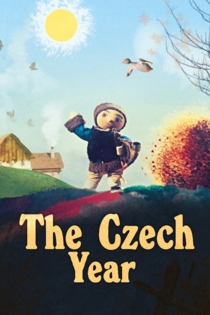
O zlaté rybce
Jiří Trnka
Jan Werich
A poor fisherman catches the golden fish that promises him to fulfil three wishes if he sets her free again. He does so and the fish fulfils two of his three wishes. However, she refuses to fulfil the third one, the last one in which the fisherman’s wife wants to be equal to God.
The Golden Fish

To jsou Bratři v triku
Bruno Šefranka
František Freiwillig, Josef Lada
Документальная короткометражная кинолента рассказывает о создателях чехословацких мультипликационных и кукольных фильмов, о процессе их творчества. Значительное место в киноленте уделено фильму-сказке «Чёрт и Кача», созданному по мотивам рисунков художника Йозефа Лады, и фильму «Сотворение мира» — по рисункам французского карикатуриста Жана Эффеля.
To jsou Bratři v triku

Císařův slavík
Jiří Trnka, Miloš Makovec
Helena Patočková, Jaromír Sobota
Adaptation of a fairy tale by Hans Christian Andersen, about an emperor who prefers the tinkling of a bejeweled mechanical bird to the song of a real nightingale. When the Emperor is near death, the nightingale's song restores his health.
The Emperor's Nightingale
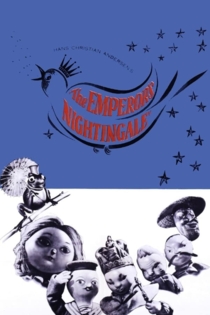
Bajaja
Jiří Trnka
Bayaya, a young peasant, protected by the spirit of his dead mother, arrives at the castle of the King, where he entertains his three daughters. He soon realizes that the three princesses are nagged by evil spirits. The little peasant manages to rid them of them, fights a duel with a wicked lord who wanted to marry one of the three princesses. He finally wins the heart of the youngest sister while saving the soul of his mother who was in purgatory.
Prince Bayaya
